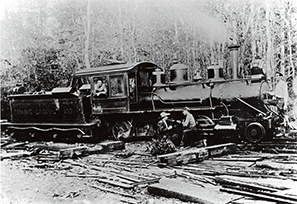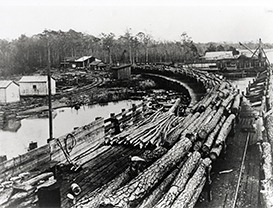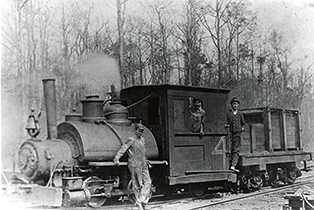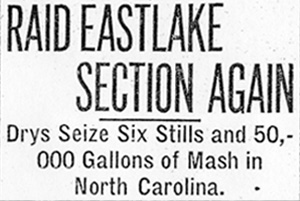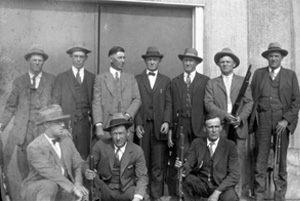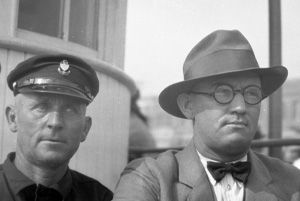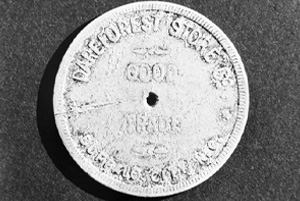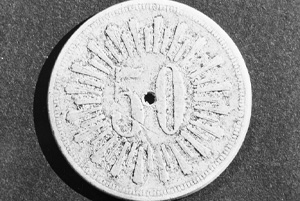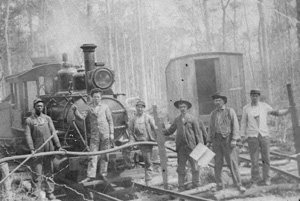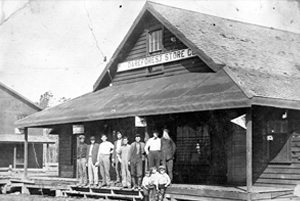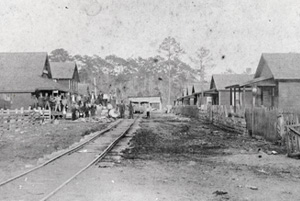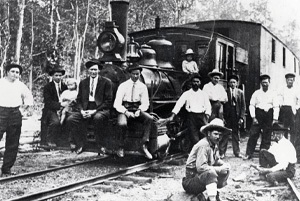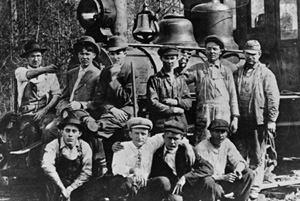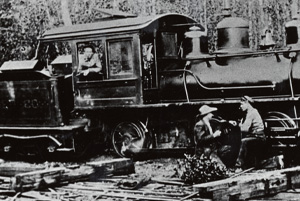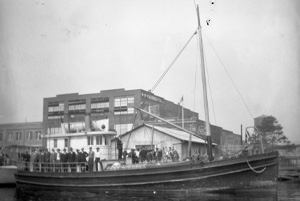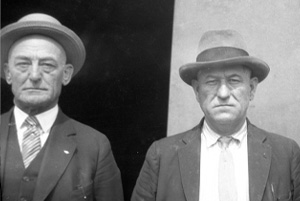Our Story
Buffalo City Distillery
Buffalo City Distillery, located on the North Carolina Outer Banks, honors the area’s Prohibition-era heritage in a modern state-of-the art facility by providing premium farm-to-bottle spirits and exceptional visitor experiences.
Buffalo City
Following the U.S. Civil War, the Buffalo Timber Co. of New York purchased vast acres of old-growth cedar and cypress forests on the mainland of Dare County, NC and set up large-scale timbering and milling operations near the village of East Lake. The town that sprang up became known as Buffalo City. By the time national Prohibition was enacted in 1920 the valuable trees around Buffalo City were becoming depleted and the townspeople needed a new way to make a living. The entire community turned to illicit production of high-quality “East Lake Whiskey” that was smuggled to and became famous in the speakeasys throughout New York City and New Jersey. With its remote location surrounded by swamps and the vast waters of the Pamlico and Albemarle Sounds, Buffalo City was an ideal place to hide from the Revenuers. Historians consider Buffalo City to be the “moonshine capital of the world” during national Prohibition. When Prohibition was lifted in 1933 the town fell on hard economic times as the Northeast markets for their illicit liquor dwindled. By the mid-1940s the last residents moved away. Over time all the abandoned buildings were swallowed up by the surrounding swamps and Buffalo City faded into memory, museums and folklore. The area once known as Buffalo City is now part of the Alligator River National Wildlife Refuge located 20 miles west of the town of Manteo.
Our Farm
Our nearby farm is located on the Albemarle-Pamlico Peninsula near Lake Mattamuskeet. Early American settlers first began digging canals in this area in the 1700’s to provide transportation routes into the vast previously inaccessible swamps. In the process they discovered highly organic pre-historic “Blacklands” soils underneath that are some of the most fertile on earth. Today this area is farmed by some of the largest, most productive farmers in North Carolina. The area is also a sportsmans’ paradise supporting a wide variety of game animals and waterfowl. To support the wildlife we leave a portion of our grains unharvested to provide winter food for the animals and waterfowl who inhabit our property.
Blacklands Soils
These rare pre-historic Blacklands soils produce exceptionally abundant and flavorful grains from which we produce our spirits. During the Wisconsin Glacial Era much of North America was covered by thick ice. During the ice formation period (18,000-75,000 years ago) the Atlantic Ocean sea-level dropped more than 100 feet from current sea-level. The shoreline retreated several miles to the east of today’s Outer Banks beaches as inland rain froze into ice rather than flow down the rivers to the ocean. When the glaciers began melting (10,000-18,000 years ago), the water began flowing back down the rivers and sea-level began to rise. The low-lying basin areas around Lake Mattamuskeet became shallow impoundments capturing mineral-rich sediment being carried down the flooding rivers while thousands of years of decaying plant materials created the rich organic soils.
Buffalo City Beginnings
